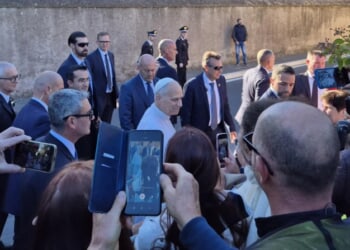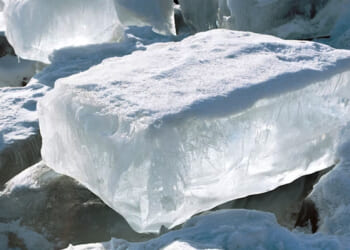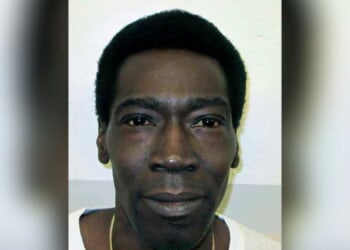The Opéra Royal de Versailles opened its season last month with a new production of Rossini’s Cinderella opera, La Cenerentola (1817), known as Cendrillon in French, the language in which it was here performed. The dramma giocoso ushers in a season considerably expanded in the last decade: eleven staged operas and nine more in concert, all written in the seventeenth or eighteenth centuries, except for four (including Cendrillon). With an emphasis on French and Italian Baroque works, this is a store of riches any devotee of pre-Mozart operas will find mouthwatering. And complementing the operatic offerings are ballets, concerts, recitals, and sacred works. Performances are given primarily in the royal theater, which can seat some 650 people (depending on configuration) and has an acoustically excellent wooden interior painted in trompe l’oeil style to represent stone. It opened in 1770 and was most recently renovated in 2007–09.
Given Rossini’s ties to Paris, it will not be surprising to learn that a French version exists of La Cenerentola. Indeed, the opera received its French premiere at Paris’s Théâtre Italien in 1822, two years before Rossini became the company’s manager. But performances there were in the Italian original. The Opéra Royal’s performance used a translation by Louis-Ernest Crevel de Charlemagne, a poet, librettist, and translator, made in 1868, the year of Rossini’s death; according to the Opéra Royal, the translation had Rossini’s approval. It consists of only the musical numbers (the recitatives were composed by the current conductor, Gaétan Jarry, who accompanied on a period piano), which suggests it was possibly conceived for performance with spoken dialogue, although the opera does not seem to have been performed at the Opéra Comique. Apart from the change in language, the performance followed the usual text of La Cenerentola, including the omission of the stepsister Clorinda’s aria known as “Sventurata! mi credea.”
Absent a compelling musicological reason for performing Cendrillon in the chosen version, the Opéra Royal must have wanted simply to give it in French, thus harking back to the tradition, once especially prevalent in Europe, of performing operas in the vernacular. Last year it experimented with an opera in translation and now programs, in addition to Cendrillon, Mozart’s Die Entführung aus dem Serail as L’Enlèvement au sérail. Retaining a modern stamp, such performances have projected titles in French and English. The nod to French might also encourage family attendance, although children may regret the absence of a pumpkin carriage, a glass slipper, and a fairy godmother. Replacing the last is Fabio (Alidoro in Rossini’s original), the tutor of Don Rodolphe (Don Ramiro), while Cendrillon’s stepparent is also a man, Don Magnifico. The masculinity of these characters comes from a source for Jacopo Ferretti’s libretto for La Cenerentola: Nicolas Isouard’s Cendrillon, a popular success following its 1810 premiere at the Opéra Comique that was only gradually superseded by La Cenerentola.
But Cendrillon is not a children’s opera. Musically and structurally it behaves like other topflight Rossini comic operas, with scintillating ensembles and arias that flesh out characters. The elimination of magical elements gives the opera a realistic tone that arguably sharpens the cruelty Cendrillon (Angelina) suffers even as the buffo context blunts it. When in the quintet in Act I the Prince (in disguise) and his representatives ask a terrified Don Magnifico about the existence of a third daughter, he hesitatingly replies (in Cendrillon’s presence), “She died.” Yet Cendrillon eventually triumphs, celebrating her transformation, both in rank and in maturity, in the virtuosically ebullient aria-finale “Non più mesta.”
The production by Julien Lubek and Cécile Roussat suggested the down-to-earth nature of Cendrillon by depicting Don Magnifico’s house in ramshackle condition. Even the palace scenes avoid overt spectacle. Sets and costumes are in a primitive style that apparently reflects the producers’ take on commedia dell’arte; a quintet of highly dexterous acrobats strengthened the tie. The drama was presented without undue directorial intrusion, a plus for the audience’s children (to say nothing about adults). An energetic turntable keeps the action lively.
Gaëlle Arquez’s exquisite Cendrillon, sung in the mezzo-soprano’s native language, helped justify the choice of French. Her gracefulness here is reminiscent of her work in Offenbach. Musically, the darkness of her voice underscored the sadness of the D-minor song Cendrillon keeps returning to, while her solid technique familiar from Baroque roles allowed the florid writing of “Non più mesta” to sparkle. Also endowed with a fine technique and an appealing sound was the tenor Patrick Kabongo, as the prince Don Rodolphe. Early on the voice seemed smallish, but he blossomed with panache in his Act II aria, “Sì, ritrovarla io giuro.” Alexandre Adra, a young bass from the Académie de l’Opéra Royal, invested Don Magnifico with due self-importance and a solid voice adept at patter (which sounded fine in French).
Come to think of it, there was magic too: when Magnifico samples the palace cellar’s holdings, new bottles keep appearing from nowhere. Also good were the bass-baritone Alexandre Baldo, who as Fabio travels by wheelchair when disguised as a beggar, and the baritone Jean-Gabriel Saint-Martin as the prince’s valet Perruchini (Dandini). The soprano Gwendoline Blondeel and the mezzo-soprano Éléonore Pancrazi squabbled engagingly as the stepsisters. The French translation worked fine, but I did miss the rolled Italian Rs in the Act II sextet. Gaétan Jarry conducted with verve, as fine voices blended handsomely with the warmth of period instruments in the intimate theater.

















